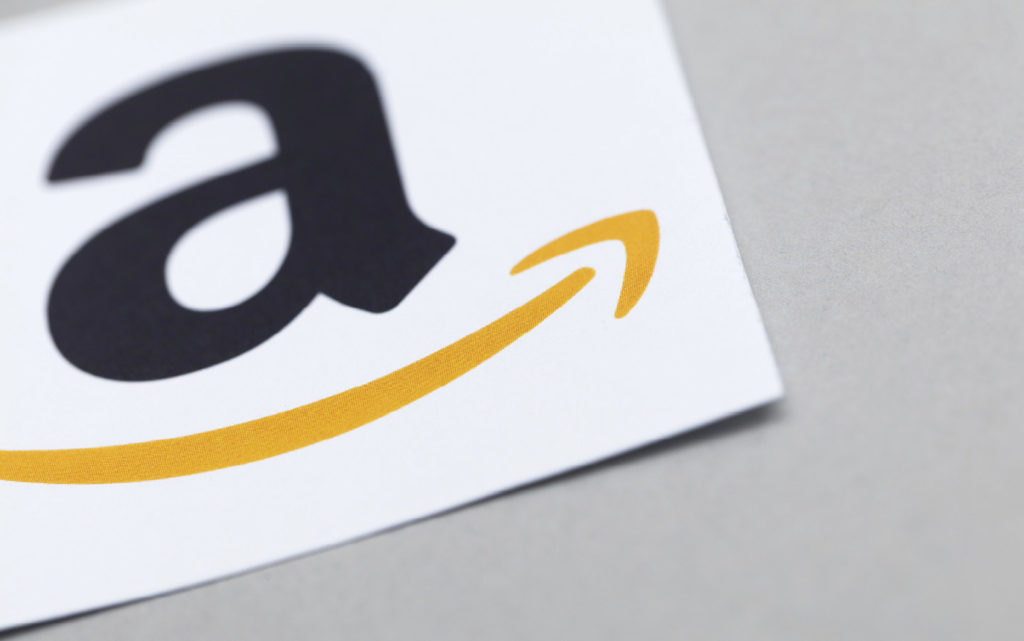DSU Fall 2022 Presentation by Blake Mallen
How the Right Amazon Strategy Can Take You From Pain to Profit.
We have an Amazon problem.
I’m not just talking about our online shopping habits or the fact that 20 Amazon boxes show up on our doorsteps each week. Amazon is the third largest search engine in the world and where 63 percent of all product searches start. Let’s be real, if your product is not on Amazon, customers think you’re weird. Amazon is not where the world is going—the world and consumers are already there.

In my 22 years in the industry, I’ve been blessed to have gathered a fairly unique perspective from living on all sides of the direct selling fence. I’ve been a top earner, an owner that went from a scrappy startup to major acquisition, an officer of a public direct selling company, and now president of Prüvit.
I understand launching, hypergrowth, scaling and all the ups and downs in-between. At Prüvit, we’ve been on the leading edge of the customer-centric conversation and have always been heavily invested in the mainstream trends around the world. Through experience, I can tell you that in order to bring relevance to the channel today, Amazon has to be a critical part of our strategy.
You may assume that since you haven’t chosen to sell on Amazon, that your products aren’t available there. If you think that’s true, pause a moment right now and do an Amazon search for your brand name. Odds are, someone is using your brand reputation and image to sell products without your permission.
If you’re a product-based company, you can either choose to sell on Amazon or unauthorized sellers will do it for you.
The Dangers of Letting Amazon Run Wild

Imagine being a new distributor, excited to launch your business. You’ve finally worked up the nerve to talk to your first prospect and, when you tell them about your great product, the first thing that customer does is what everyone will do: they either will go to Amazon directly, or stop by Google, where it’s almost certain that one of the first listings that pops up for your product will be…Amazon. So, what happens if the product on Amazon is cheaper than the price you, a new distributor, can sell it to them?
This is what happens when we don’t pay attention to Amazon. In that scenario, you’ll not only lose the customer relationship, you’ll also lose the morale of that brand new distributor and all of their potential growth. And, on their way out, they’re probably going to complain to their upline, who will complain to their upline and now you have a telephone game of complaints and a support team who is dealing with issues out of their control.
And the complaints won’t stop there because you can’t regulate the quality of products sold this way. You don’t know what claims are being made on the product descriptions, how long it’s been in a hot garage, what the expiration date is or what the packaging looks like when it arrives on the customer’s doorstep. All of this does serious damage to the brand. At the end of the day, an uncontrolled Amazon model violates the integrity of the business model and upends what is supposed to be a fair opportunity for everyone.
Defense and Offense
Winning the Amazon game begins by owning and protecting your brand on Amazon. Start by setting up your Amazon store and brand registry so that you have the ability to remove all unauthorized sellers. Amazon makes it easy to hide behind seller names, and many times it’s the same person with multiple accounts.

Trying to deal with these ghosts merely through a company compliance process is extremely difficult, which is why an Amazon brand registry strategy is a welcomed solution. Over time, your company will own the Buy Box, control the price and ensure that all Amazon imagery matches your marketing. Don’t try to shortcut this by setting up a brand registry without selling any products. Amazon wants the sales, and this won’t work long term.
Next, tackle pricing. I’ve seen brands make the mistake of competing with themselves by matching or dropping their prices on Amazon. At Prüvit, we don’t match the price; we raise the price. Our Amazon price is always higher than what distributors sell the product for, which guarantees our distributors always have a better hookup than Amazon. Why would someone go to Amazon and pay more money if they already have a relationship with a distributor who can give them a better deal? We have chosen this channel because we believe in creating and growing entrepreneurs. Give your community the advantage.
There is good news with Amazon. Having a controlled footprint on the most trusted third-party website on the internet lends unique credibility. Ratings and reviews are what customers trust today, so even if they’re not buying on Amazon, a managed presence there is elevating the brand for everyone. Amazon’s search traffic can also organically drive incremental sales with a very high profit margin, so find an expert who knows Amazon’s platform and leverage their advertising options in order to scale. Don’t forget to play offense and defense here as well through strategic keyword selection.
Three Plays to Consider
There are three ways to build an Amazon strategy, and I’ve tried all of them.

1 / Find a wholesale distributor.
This is someone in the field who is already successfully selling on Amazon or has the expertise to take it on. Generally, this takes place through a wholesale agreement. The benefit to this is that it’s hands off—you get the revenue and don’t have to think about it, you limit other sellers and protect your pricing. In my experience, however, because you don’t control the inventory, have no visibility into what’s happening and they often cut corners, this method can leave the brand vulnerable in ways you don’t intend.
2 / Do it yourself.
You can leverage your internal marketing team for design, but building the expertise in-house also means hiring talent that understands both Amazon and the nuances of your company compliance. This can be difficult to find, and building a small, dedicated team will likely be more expensive, time consuming and have a longer learning curve than seeking outside expertise.
3 / Engage an expert.
After learning from the first two options, I now prefer to work closely with an agency that specializes in the direct selling channel to run our Amazon strategy. This allows us to have full visibility and control while staying fairly hands-off on the day-to-day. The sales it generates pays for itself, while allowing us to actualize all of the benefits of protecting our community and elevating our brand. It’s become a real win-win for the company and our community.

How to Win
I’m a firm believer that intention matters—so it’s important to have strong understanding and belief in why you are making a decision to incorporate an Amazon strategy and how it will really help both the company and community. The benefits are clear, so successful implementation really comes down to leading with education, transparency and communication.
You may run into some pushback from the field if some of your distributors are already using Amazon to become super sellers without realizing that they’re degrading the brand in order to advance themselves. But our role as leaders is to do what’s right for our communities and companies long term, and that means protecting the brand and maintaining equal opportunity for distributors.
Start with the top leaders and educate the field on how this new strategy protects their businesses. As it begins to pay off, provide an upside for distributors through a revenue pool, bonus, incentive trip or some sort of additional recognition or reward. This helps create alignment with the company and the community.
It’s easy to understand the value of additional revenue, but I would say that the strategic benefits of Amazon—the brand protection, quality control and increased visibility and credibility—are even more valuable to the company long term than the potential financial benefits.
The world has shifted. We are in the business of teaching people how to shift paradigms, and that begins with a shift in our own thinking. We can’t get stuck in old paradigms because omnichannel visions are not the future—they’re the present. This is the way the Amazon game is played, and—if you want to win—you must control it.
Blake Mallen, President of Prüvit, is a billion-dollar brand builder and community marketing expert. With over two decades of field, ownership and executive experience in the direct selling industry, Blake offers a unique combination of wisdom and innovation that has helped him turn ideas into iconic healthy lifestyle brands.
Three industry leaders share their experience tackling AMAZON—the eCommerce Goliath
By Sarah Paulk

It’s likely that every direct selling executive has been in a meeting when someone has asked, “What are we going to do about Amazon?”
Amazon, with its sprawling marketplace, free shipping and trusted third-party reviews, is radically altering the direct selling landscape. Unauthorized sellers list products for less than the retail price and shoppers flock to it as a search engine to discover their new favorite products. In the process, distributors and the business model in general are losing out.
“What good is a wholesale price that you’re offering to all of your affiliates or preferred customers, if there really is no retail price?” shared Danny Lee, 4Life President and Chief Executive Officer. “If it’s just window dressing and no one ever buys at that price, then it really has no meaning at all. That can’t be a long-term strategy for any company, but especially in our industry where we are relying upon this sales force that works with friends and family on a one-on-one basis.”
Unauthorized and Anonymous
For years, the direct selling industry has stepped up compliance and put safeguards in place to prevent inventory loading or large purchases of products by one person rather than real, individual customers. But Amazon has fed this activity through its powerful privacy protections for sellers and customers alike, making offloading products easy and anonymous.

Under cover of anonymity, distributors can leverage Amazon to engage in “garage qualifying”—the process of using a wholesale discount to buy in bulk and make rank—by setting up multiple shell storefronts under fake names and sell surplus products at a price that is deeply discounted from retail.
This is not only a legal issue, but one that inflicts damage on all parties: Distributors lose sales, companies endure brand damage and customers miss out on product support and affiliate relationships. Effectively combating this endless supply of anonymous sellers means companies must fully own and build their brand presence on Amazon.
“By having a presence on Amazon, we become the ‘authorized seller’ and therefore we can protect our brand from the host of unauthorized sellers who plague many direct sales companies,” said Roger Morgan, pawTREE Founder and Chief Executive Officer. “We control our prices on Amazon, and we are committed to selling our products on Amazon at higher prices than we do on our petPros’ websites.”
The Amazon Learning Curve
A managed presence on Amazon is ideal, but not simple. Advertising, compliance and uncovering the best ways to drive traffic on the platform requires an experienced team—something that is not always easy to find. Combine that with high-end products and the nuanced direct selling business model and that search for knowledgeable talent becomes even more trying.

“If you have your brand registered and trademarked, it’s not hard to set up, but it is what you do afterwards that is challenging,” said Gaya Samarasingha, Kalaia Founder and Chief Executive Officer. “I just engaged our third agency in a short period of time. It’s another whole business, and there is a learning curve.”
Kalaia, which was featured on Amazon during Small Business Prime Day, originally turned to Amazon as a way to enhance new customer acquisition and increase visibility. The company still maintains Amazon as an important part of its sales strategy, but Samarasingha has adjusted her expectations of what the platform will provide for her company.
“Would I call us a success on Amazon? No, we are still a small fish in a humongous ocean, trying to navigate and learn as we go,” Samarasingha said. “We will maintain a presence on Amazon to be able to control our brand and make sure no one else comes in and starts selling our products on it, but it may become less of a priority for us.”
Resource vs. Rival
Amazon can either be a resource or it can be a rival. When companies protect their brand presence on Amazon, the platform becomes a place where customers can find complete product descriptions, unbiased reviews and beautiful product images that serve to only elevate the brand and the industry as a whole. If they see all of this and a higher price, it strengthens their relationship with the distributor who referred them to the product in the first place, protecting the distributor’s business opportunity and the integrity of the model overall.
“The question is, are you going to just be passive, stick your head in the sand and just hope for the best?” Lee said. “Or are you going to run to those theaters of war, if you will, and establish and protect your brand and prices?”
Frequently Asked Questions

- What is the BuyBox?
The Amazon BuyBox is the “Add to Cart” button on Amazon. If you have multiple sellers of an item, the store that gets the sale or gets the BuyBox will rotate based on Amazon Metrics. - How do you “Win the BuyBox”?
The primary metrics that Amazon looks at are who has the lowest price and who is in Amazon FBA. The best way to ensure that you are winning the BuyBox and getting the sale is to ensure that you are the only seller for your brand. - What is the difference between Amazon FBA and FBM?
Amazon FBM is “Fulfilled by Merchant.” This means that when a customer orders, the brand owner is required to pick/pack/ship that product to the customer.
Amazon FBA is “Fulfilled by Amazon.” This means that when a customer orders, Amazon will pick/pack/ship that product from an Amazon facility. - Why is it important to do Amazon FBA?
Amazon rewards FBA sellers, and it is often a more cost-effective model. Having your products in FBA allows for Prime and Amazon’s quick shipping. It also allows the brand to take advantage of Amazon’s shipping rates and customer service team. - What is the difference between Amazon Seller Central and Amazon Vendor Central?
Amazon Seller Central is the most popular model. In this model, the brand owns the inventory and is paid for it when it sells. The brand has the most control with this model.
Amazon Vendor Central is when the brand sells it directly to Amazon, and Amazon has control of pricing, etc. - Why is our product not the first one that comes up when we search our brand?
This is typically due to other brands advertising and winning the paid advertising space on Amazon. You can control this by running a small amount of defensive advertising. - What is an ASIN, Storefront, Seller Account and A+ Content?
ASIN is Amazon’s internal identifier code. Similar to a UPC, but specific to the Amazon platform.
Storefront is a landing page that allows a brand to provide marketing for all of its products.
Seller Account is the account that is selling the product—the account that owns the inventory and receives the payments from Amazon.
A+ Content is additional marketing space below the product listing. It is a great opportunity to provide additional brand education to your customers. - What is a Sponsorship Guarantee?
A Sponsorship Guarantee ensures that the brand will provide credit to a distributor if that distributor can prove they lost a customer to Amazon. - Does Amazon regulate what you can ask customers and what you can send them?
Yes. Amazon has very specific rules around how you are allowed to communicate with customers. - What is the average percentage of product returns?
In the direct sales space, the average return rate on Amazon is under one percent. - Do you recommend using the Amazon Transparency Program?
No. This program has very specific guidelines for how it is applied. Using it incorrectly will put your brand and trademark status with Amazon at high risk. - Do you recommend utilizing the Amazon Subscribe & Save Program?
Yes. The Amazon Subscribe & Save Program has a great adoption and retention rate. - How do you decide what product you want to sell on Amazon?
Start with your top selling items and over time expanding to offer your full assortment. Having all your products available from a marketing perspective is important but not necessary Day One. - How do you decide how to price your products on Amazon?
Price your product 5-15 percent above retail, so that you are not competing with the field for sales. - Who manages the customer service side of Amazon?
Your agency partner should manage all Amazon customer service and use company guidelines to respond to Amazon customers with the correct information. - Is Amazon good for brand visibility?
Yes. Amazon is an amazing marketing tool. Aside from the sales opportunity, it is important that your brand have a presence on Amazon to continue to gain exposure. - How long does it take to set up an Amazon account and start selling product?
When done properly, set up of a new Amazon account can take 7-14 days. You can start selling product with Amazon FBA within 21 days. - How long does it take to clean up an Amazon account and become the only authorized seller?
This depends on the partner or company that is supporting with this activity. Done correctly, Amazon clean up should take no longer than 90 days. - How much work is needed by the Brand Owner in order to launch or clean up Amazon?
This depends on the partner or company that is supporting the launch. When using the right partner, the Brand Owner only needs to provide images, content and basic product information.
From the November 2022 issue of Direct Selling News magazine.


